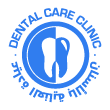3D printing: The Mega Trend in Dentistry
3D printing is still considered to be a possible “game changer”: New treatment methods, new forms of team work, new business models. Dentistry is one of the pioneers. The current opportunities for the practice and laboratory are within grasp – at the International Dental Show, 12 to 16 March 2019, in Cologne.
According to a current analysis, the worldwide market for 3D printing products in the industry is estimated to grow by between 13% and 23% up to a volume of Euro 22.6 billion by 2030.
Specifically in the medical technology sector it is estimated to increase from Euro 0.26 billion (status: 2015) up to Euro 5.59 billion (2030).
According to the estimations of the experts, the development will occur in two phases: primarily the “reinvention” of existing products up until around 2020, then increasingly innovative materials and optimised printing methods. In the industry comparison, 3D printing is experiencing the strongest growth in the medical and dentistry sectors. Hence the dentists, dental technicians and the dental industry are taking on a natural pioneer role.
The printing of bases using the laser-controlled method has long since established itself, whereas dental models are made out of plastic for instance. Market researchers see the biggest opportunities for orthodontic appliances, prostheses, crowns, bridges, aligners and models. Wide sections of which have in the meantime become areas of application in the laboratory and practice.
This manufacturing process continually attracts special attention with spectacular applications. For example, in the prophylaxis segment an individualised, 3D imprinted dental floss holder is one of the advanced developments.
Vivid images prove effective for the communications. A digitally modelled smile agreed upon together with the patient serves here as the template for an imprinted 3D model, this is in turn used to produce a negative of the patient’s teeth in a silicone key and ultimately a thin “veneer simulation” of the actual restoration for an initial aesthetic check in the patient’s mouth.
A robot also managed to implant two 3D imprinted teeth into a patient’s mouth. And to reproduce the original form of the jaw after removing oral tumors, the defect can be scanned today and a template produced using the 3D printing method.
This serves to extract a precisely matching block of bone from another part of the body (i.e. calf) which is subsequently fitted into the mouth – for the patient this is approx. an eight hour “all-in-one OP”.
Talking about 3D printing in the singular form seems to be an under exaggeration today – there are namely so many different methods meanwhile. These include the stereolithography with a precision degree in the lower two-digit micrometre area, which is suitable for instance for drilled templates and which can be used for a wide range of resins in the dentistry sector.
Furthermore, the DLP method is also available: It excels because it is extremely fast because due to the one-time exposure (instead of a dancing laser beam) the respective next layer of the object hardens as quick as lightening. The polyjet method attains an extremely high degree of precision (16 micrometres). It functions most similarly to the familiar office printer and doesn’t require support constructions and material post-processing.
From plastic to metal imprints: Here one is familiar with selective laser melting, selective laser sintering (SLS), direct metal laser sintering (DMLS) or lasercusing: The crowns, bridges and denture bases (“digital model casting bases”) are made out of non-precious metal dental alloys or titanium.
source: www.dentalnews.com

